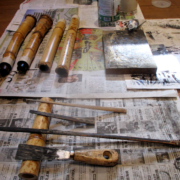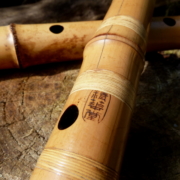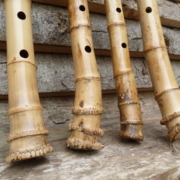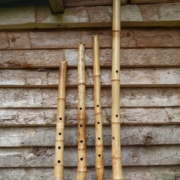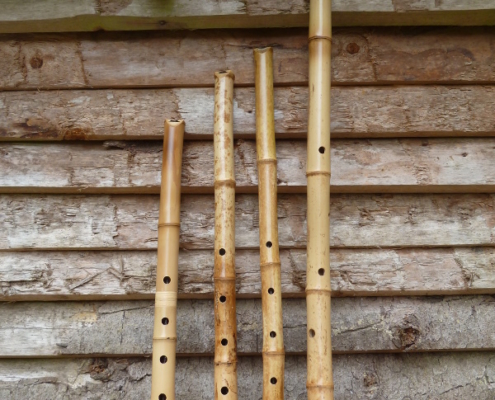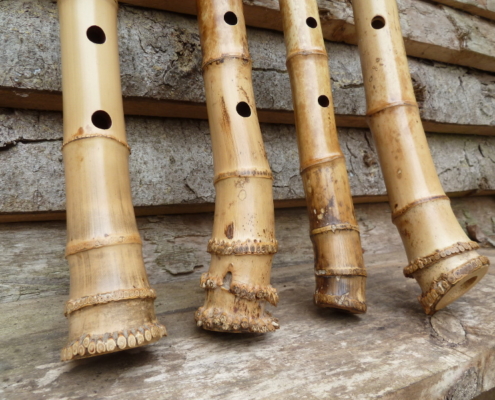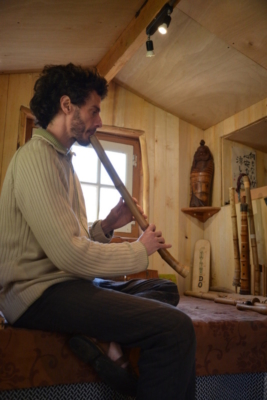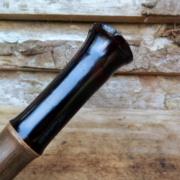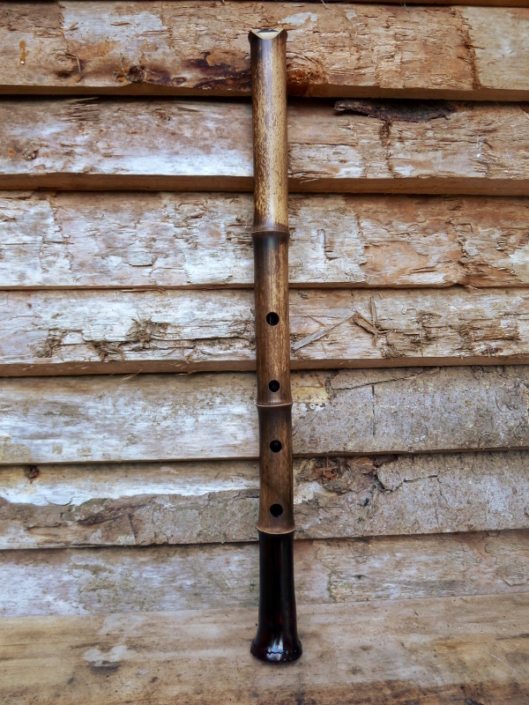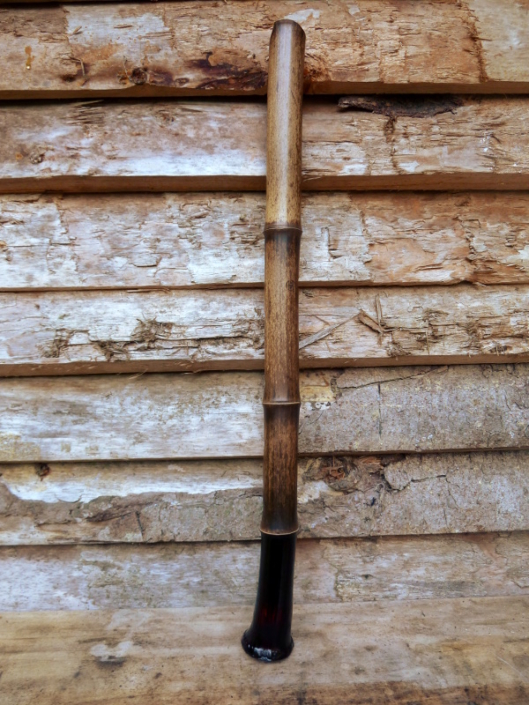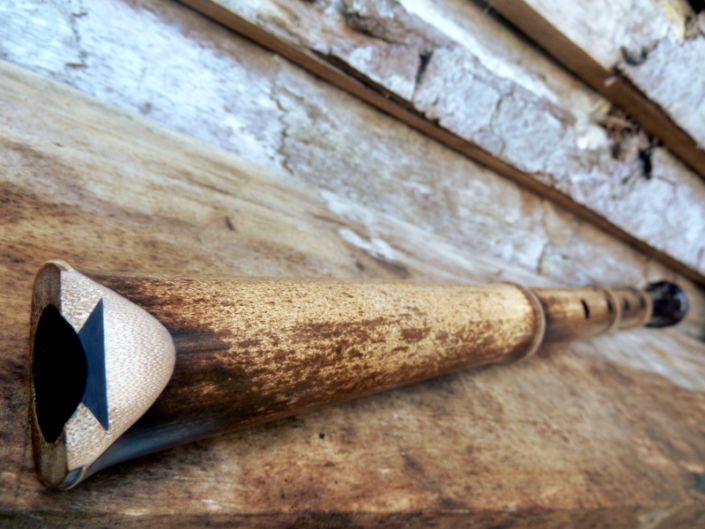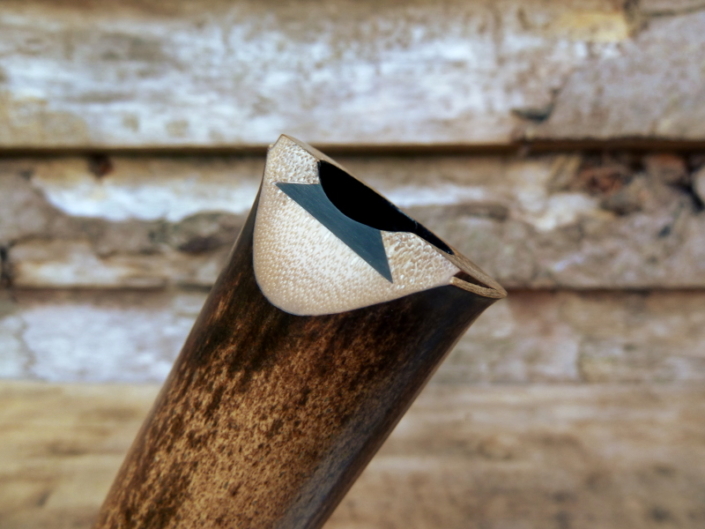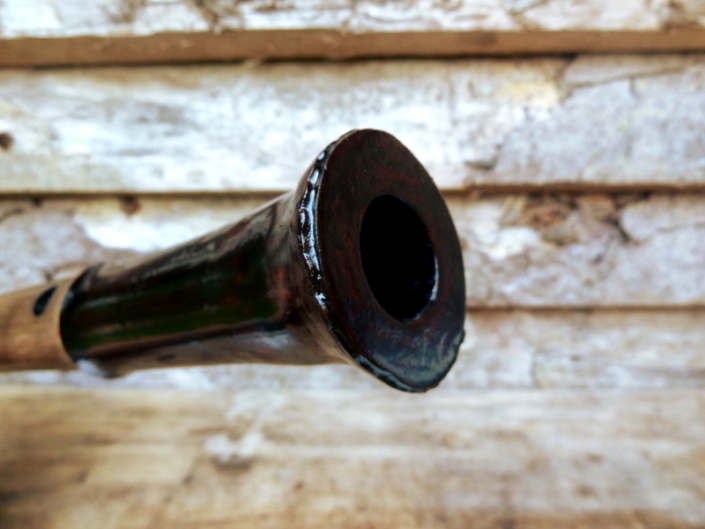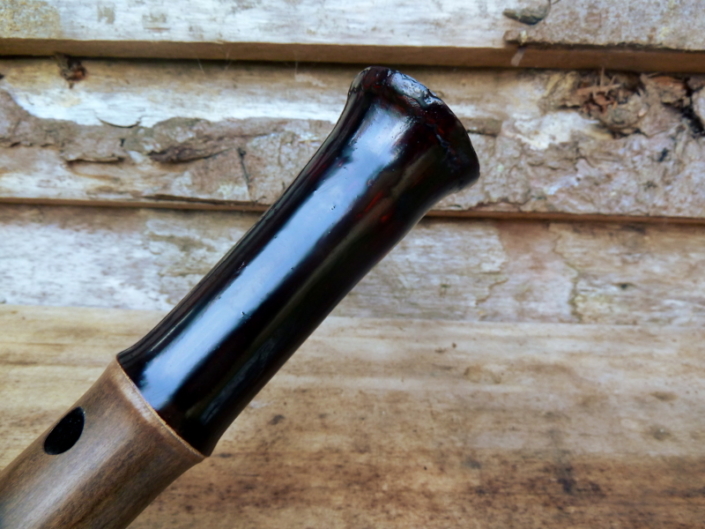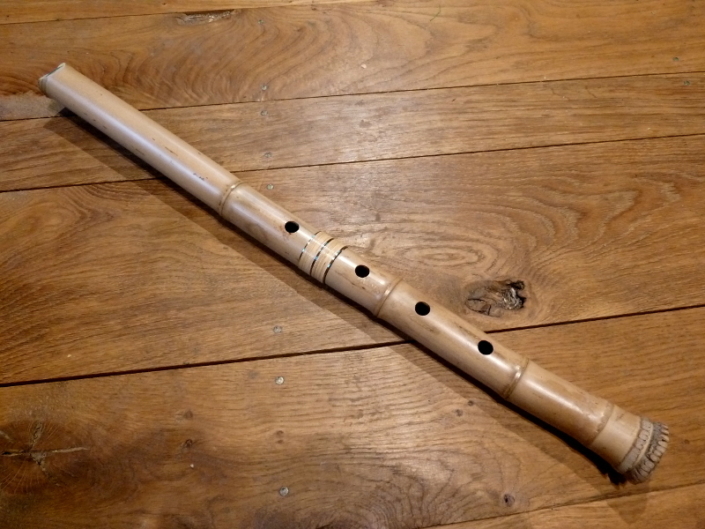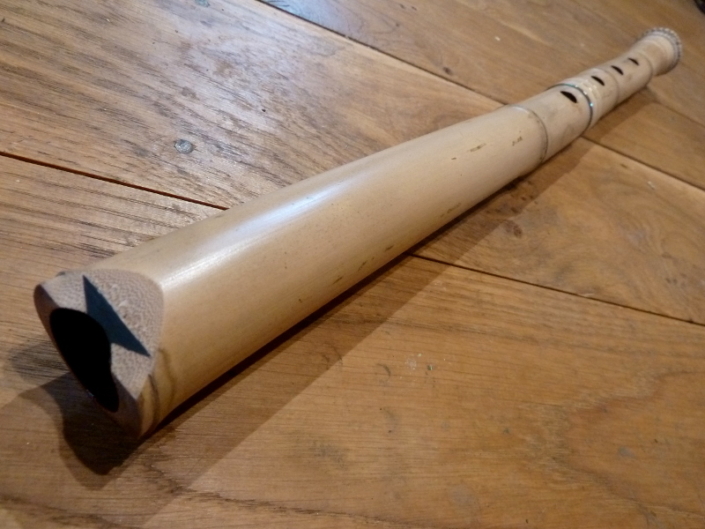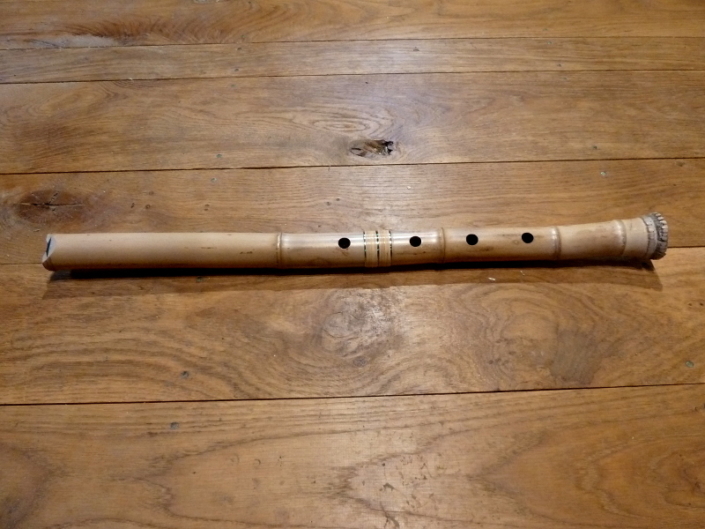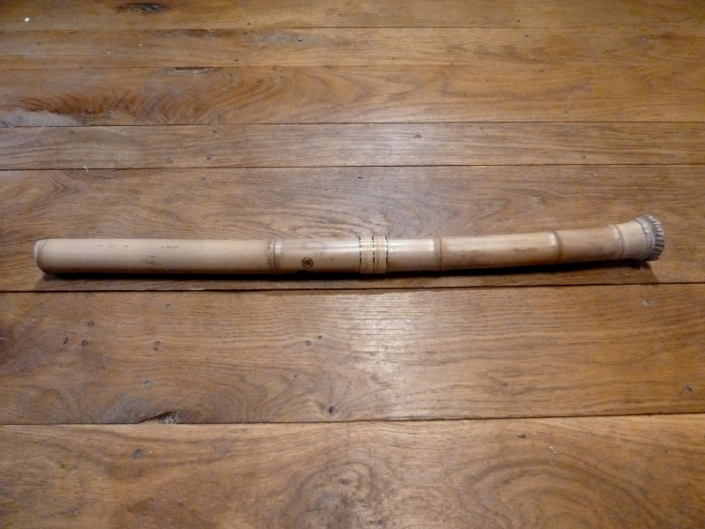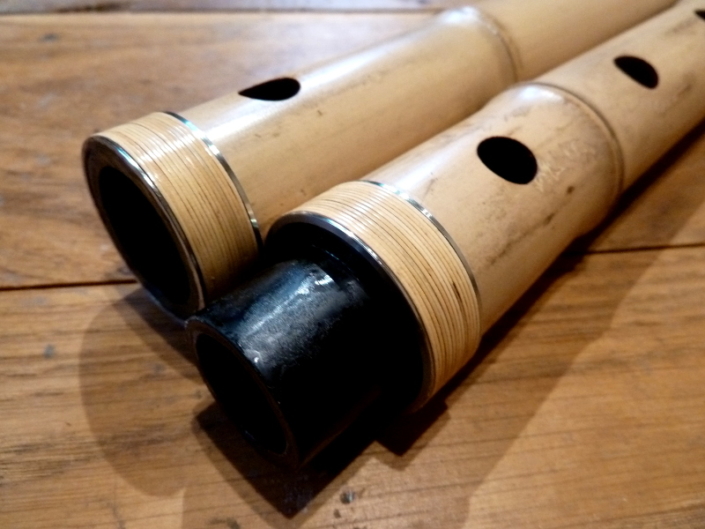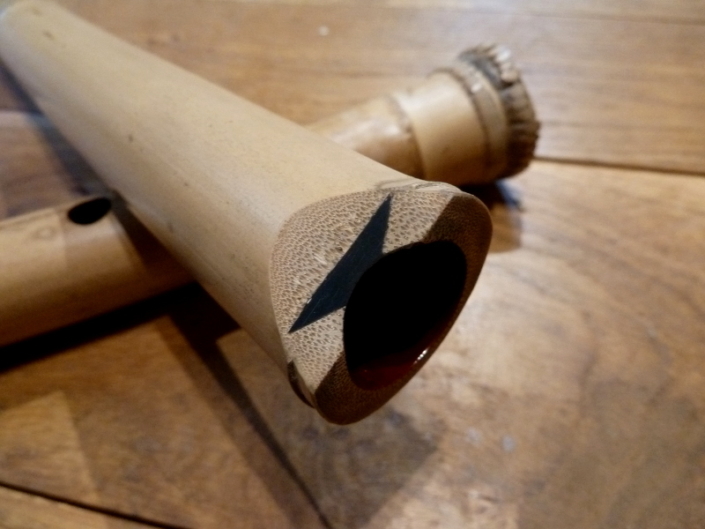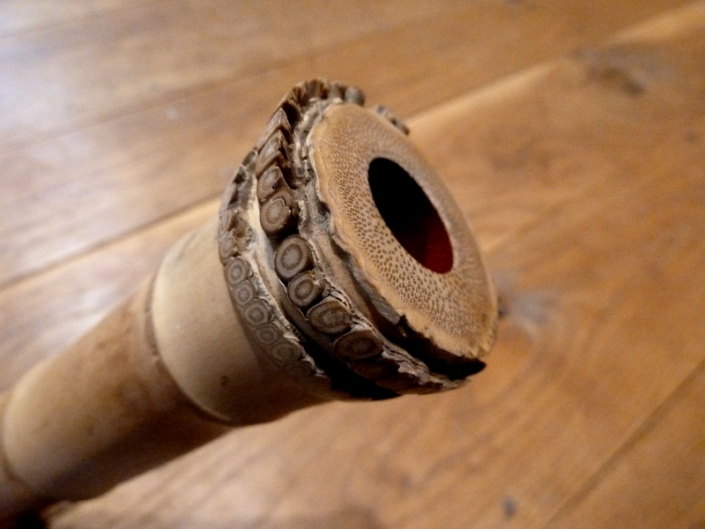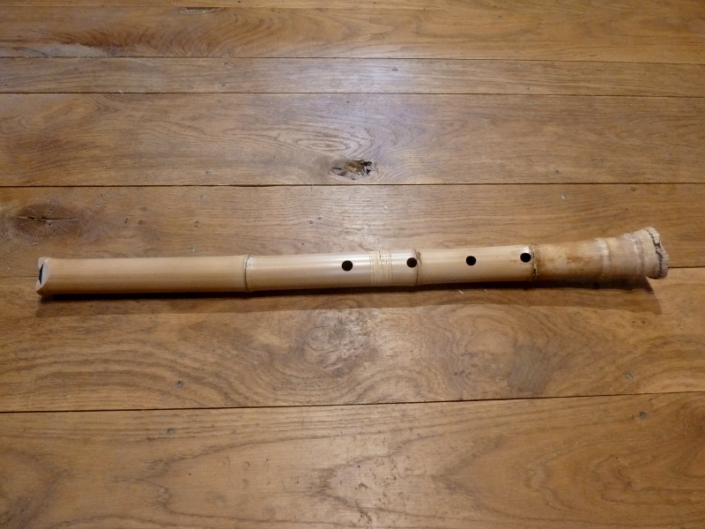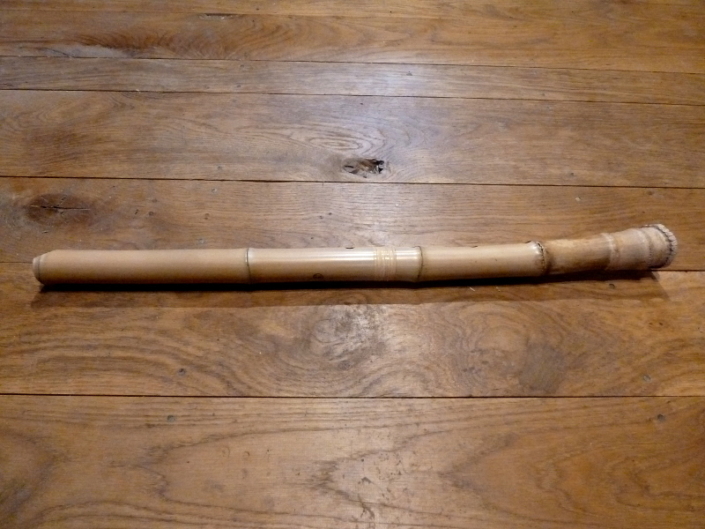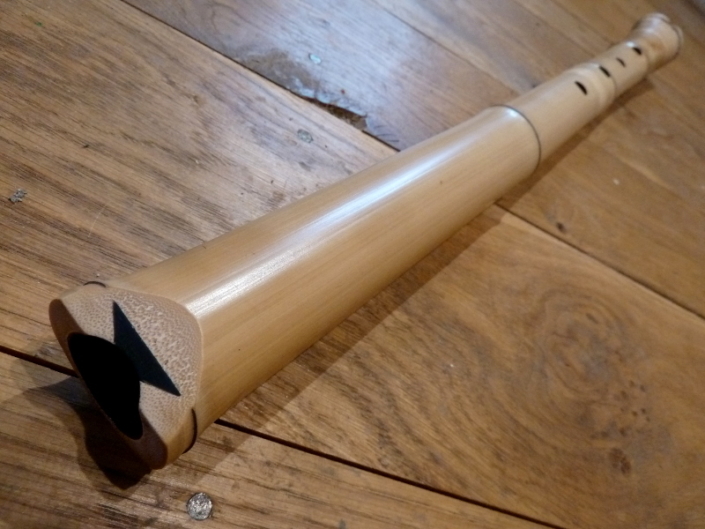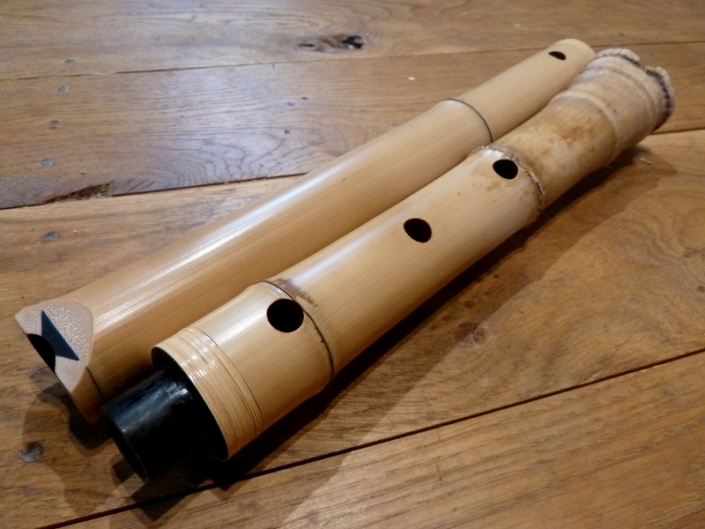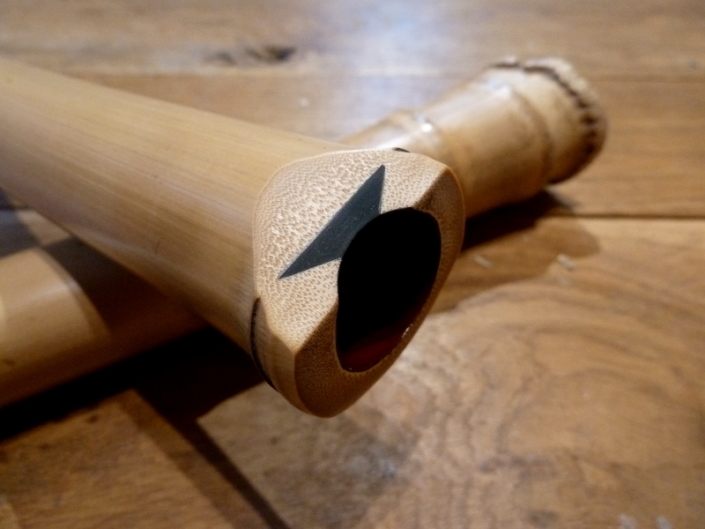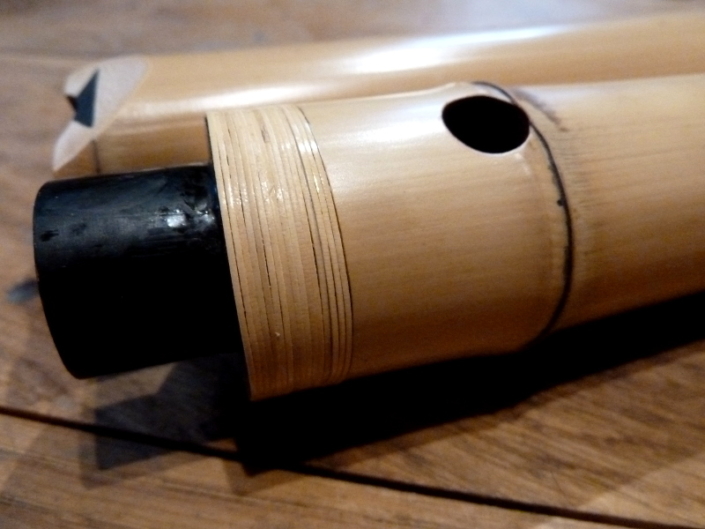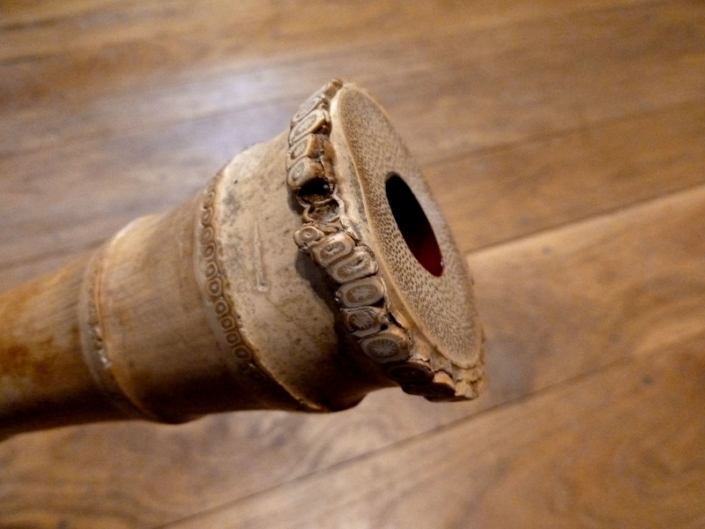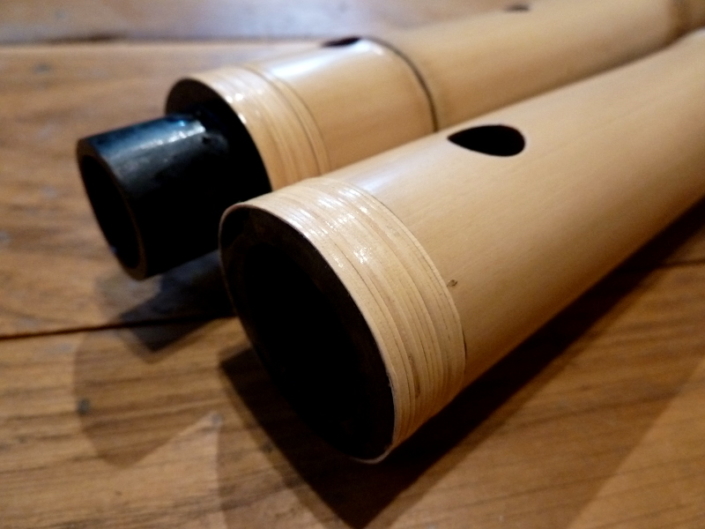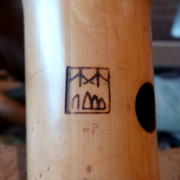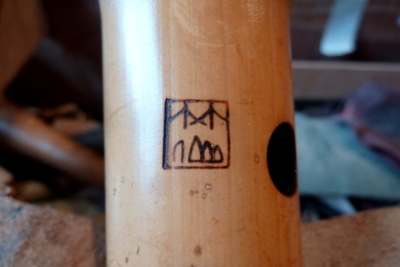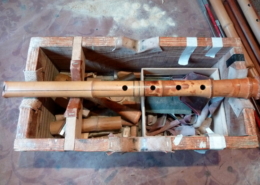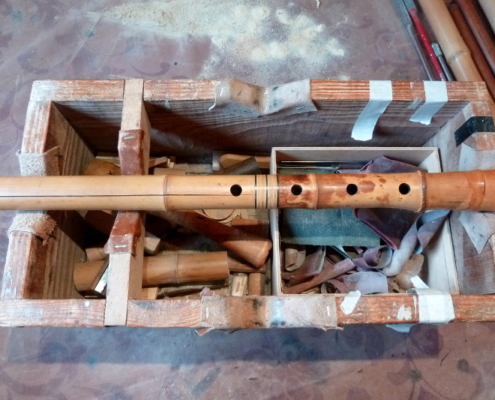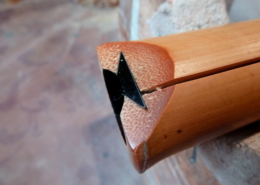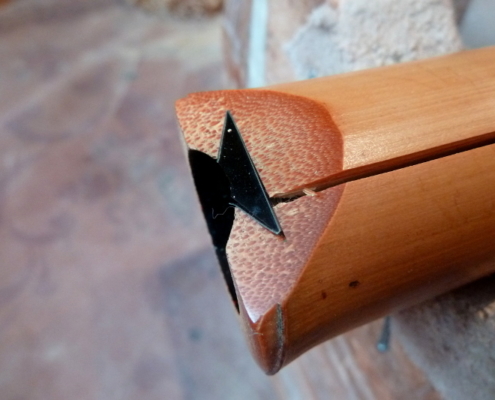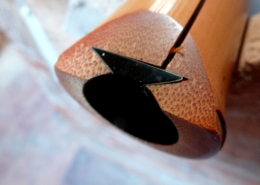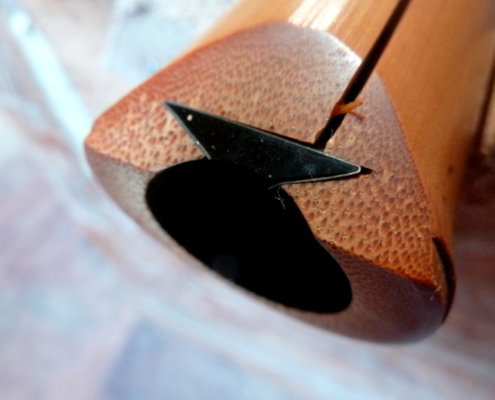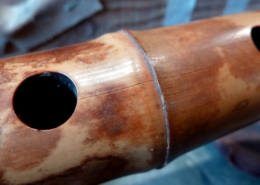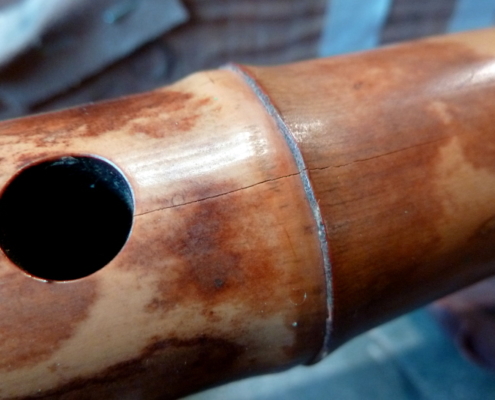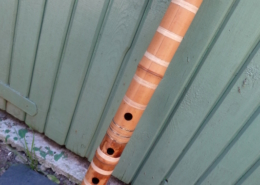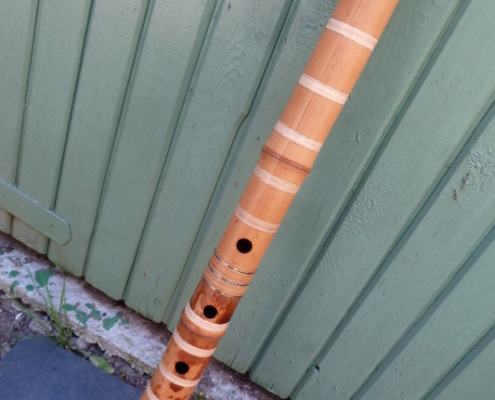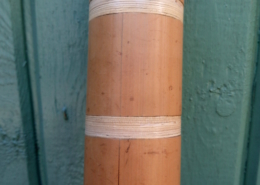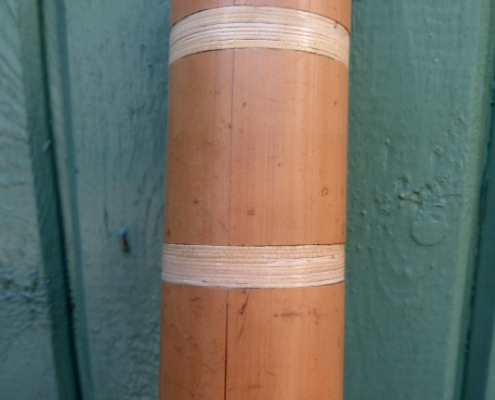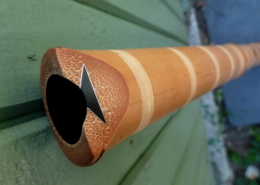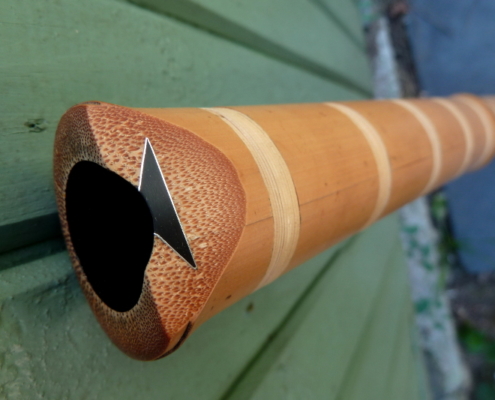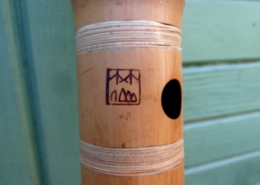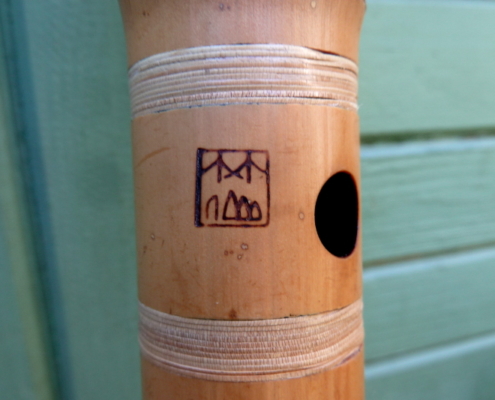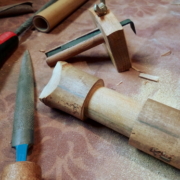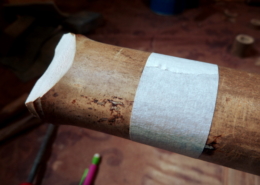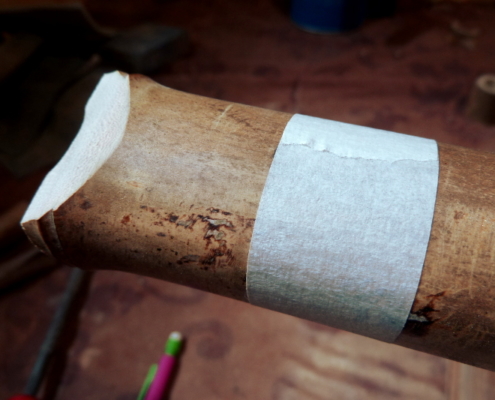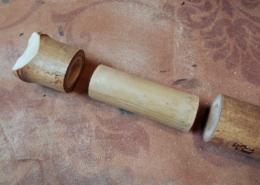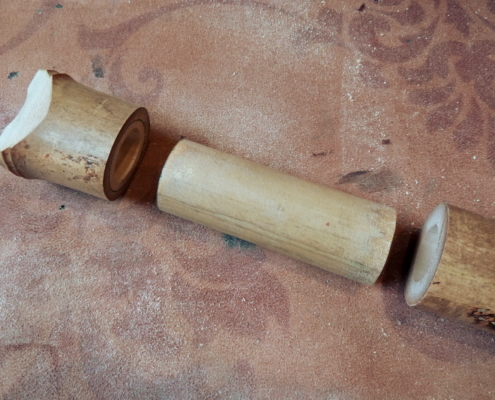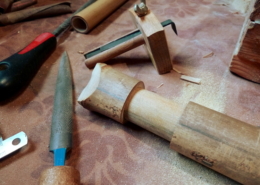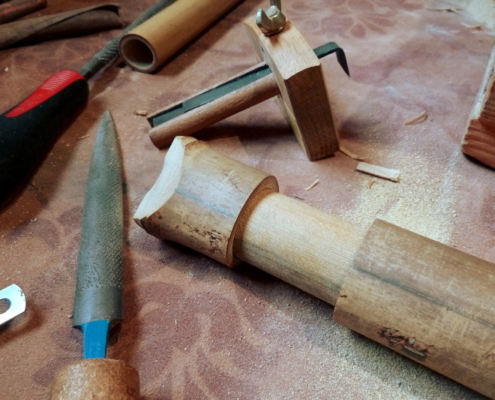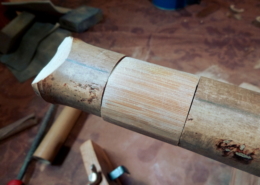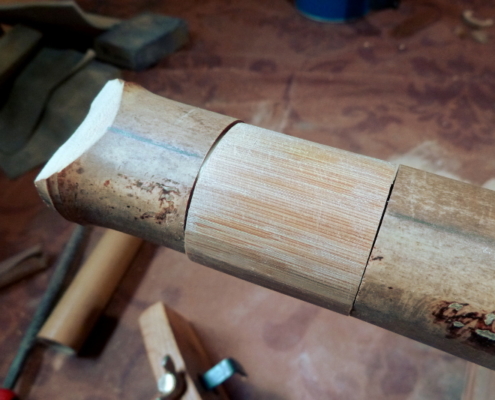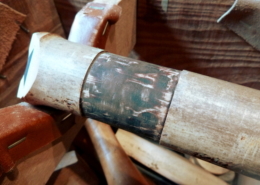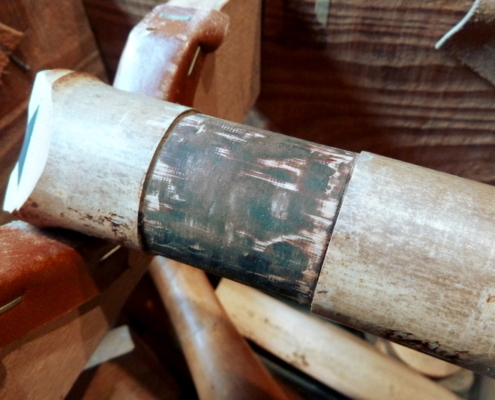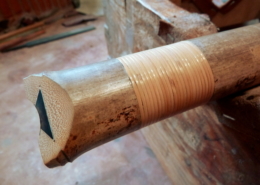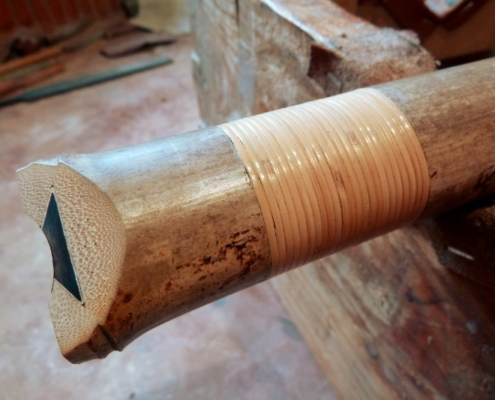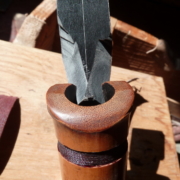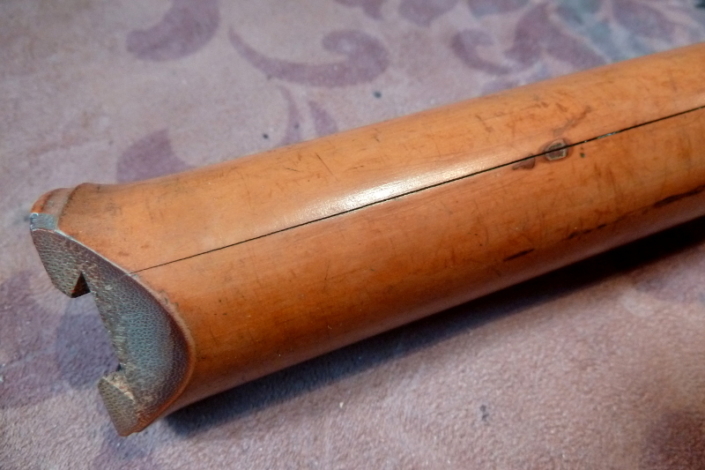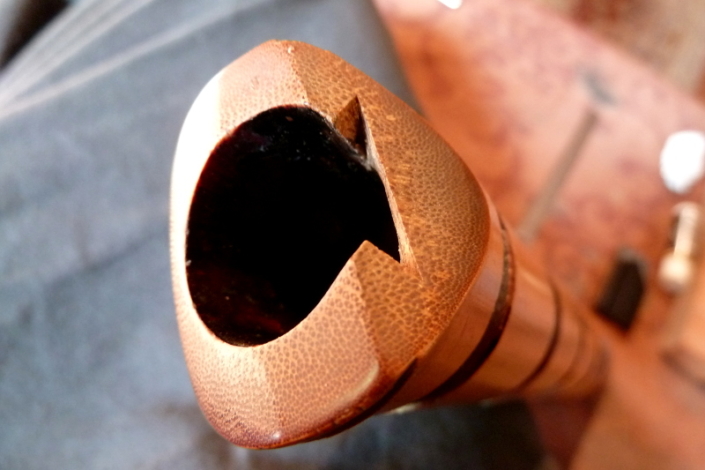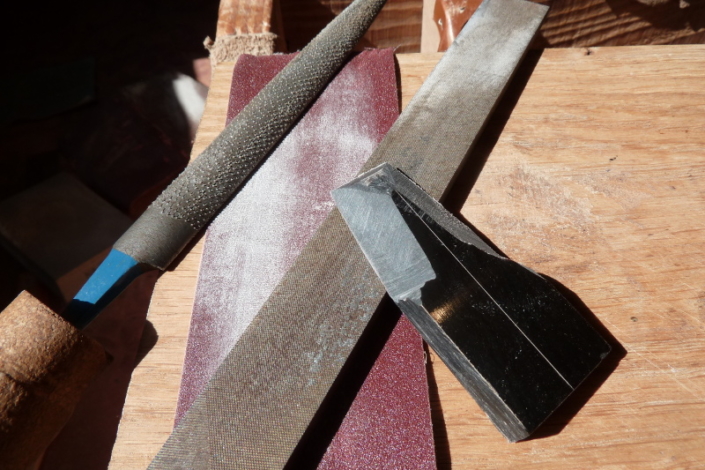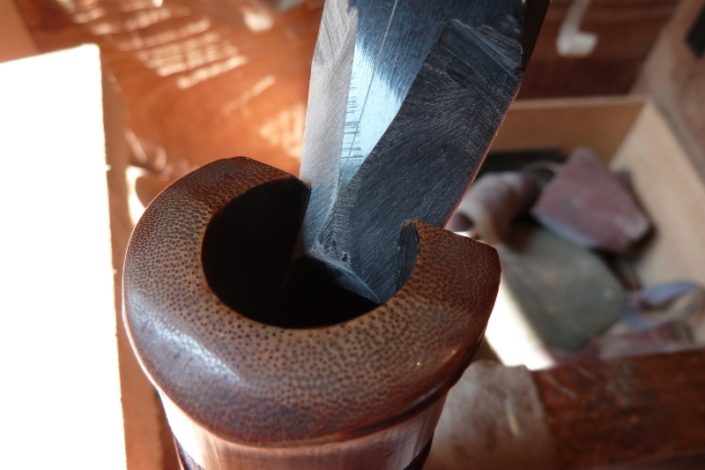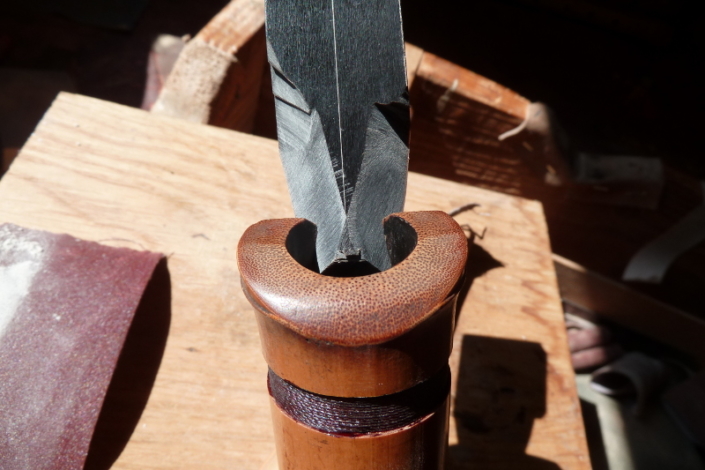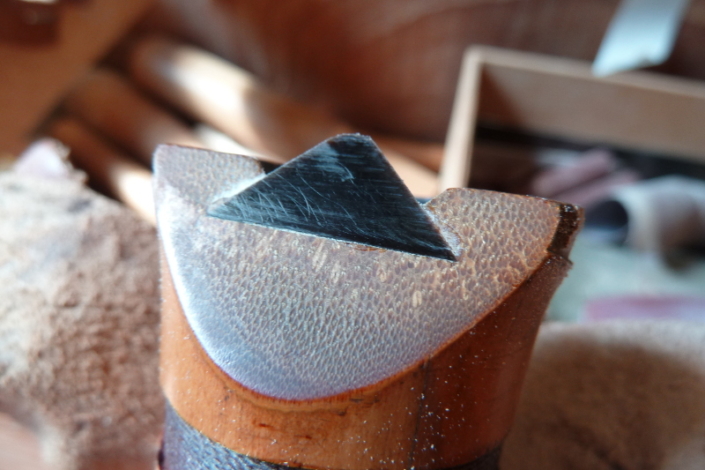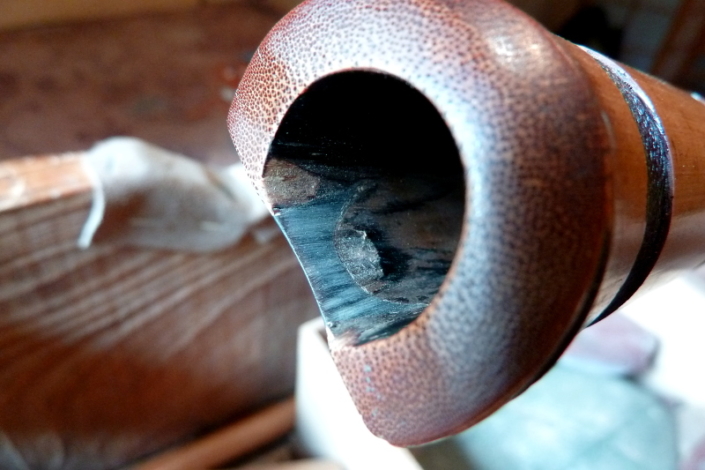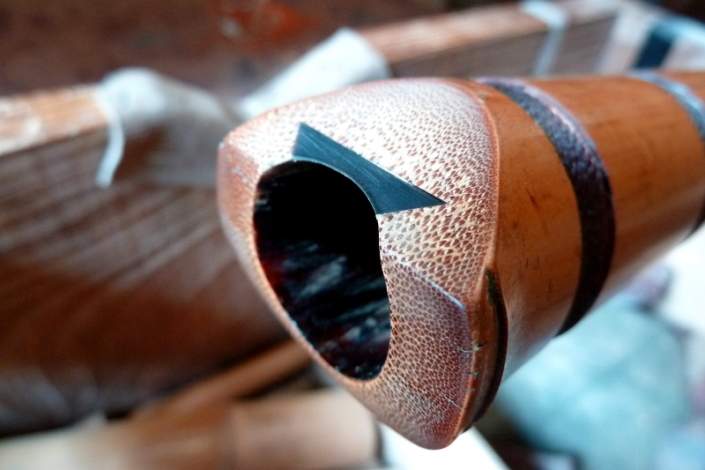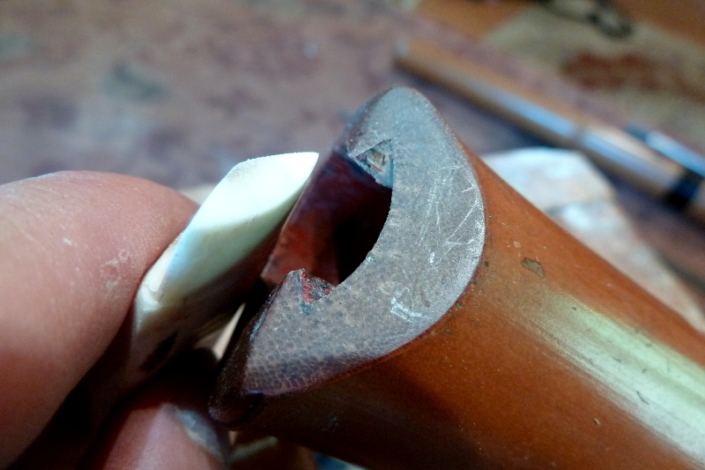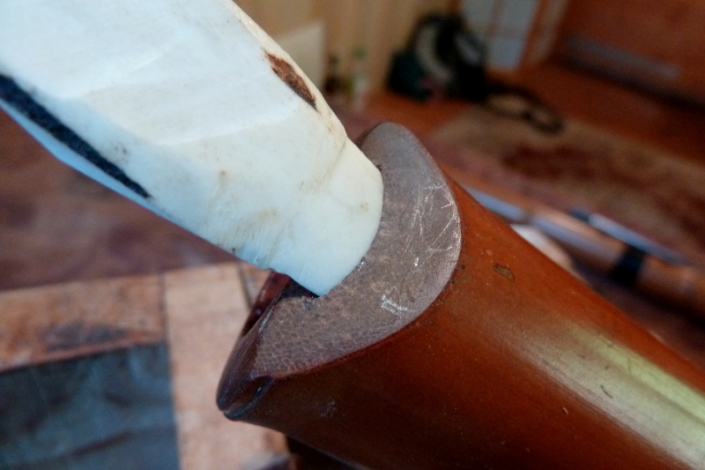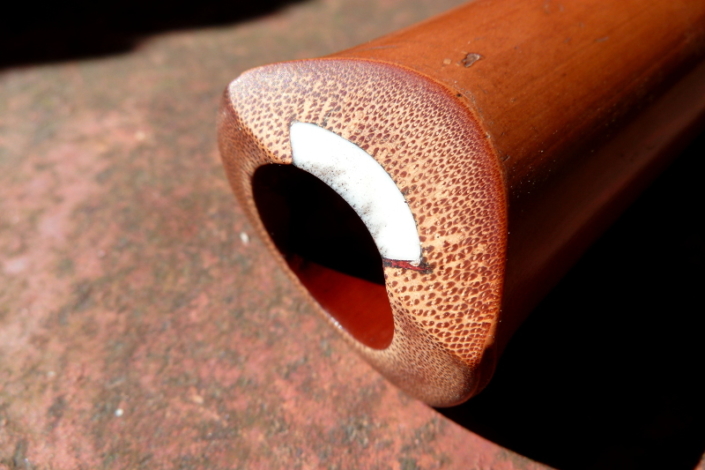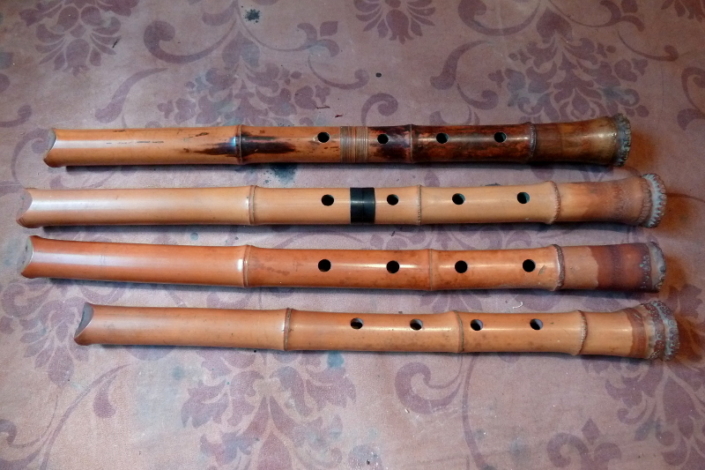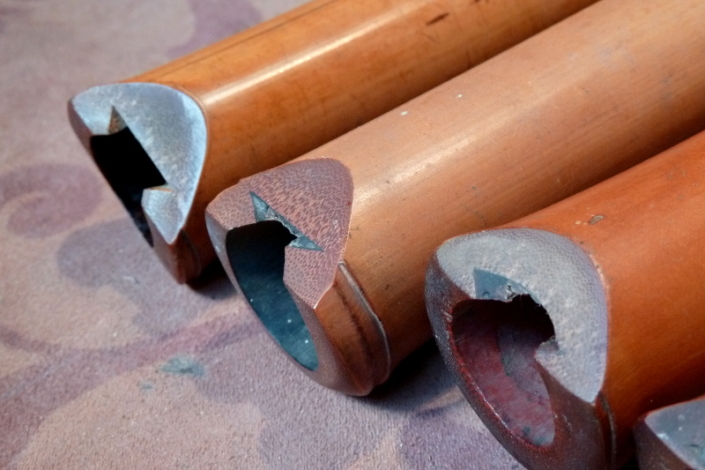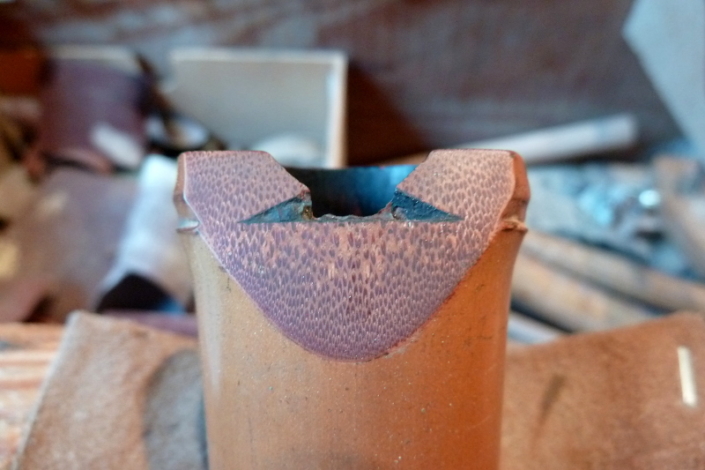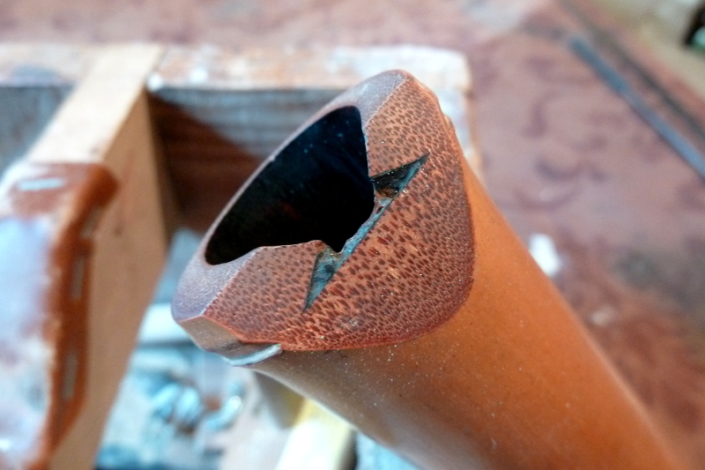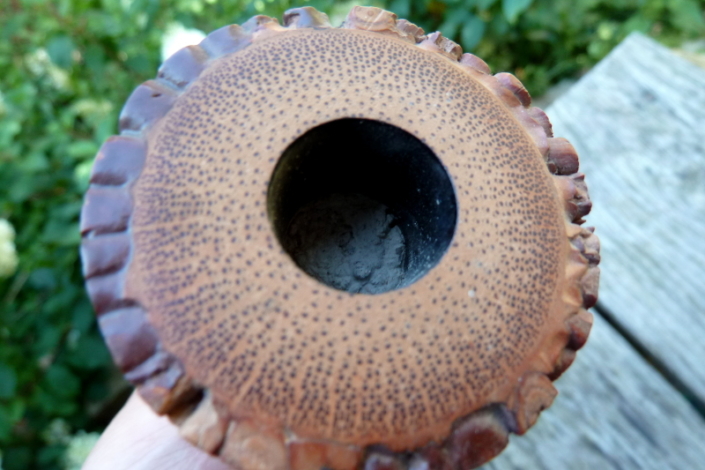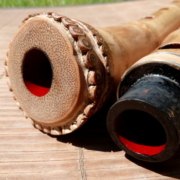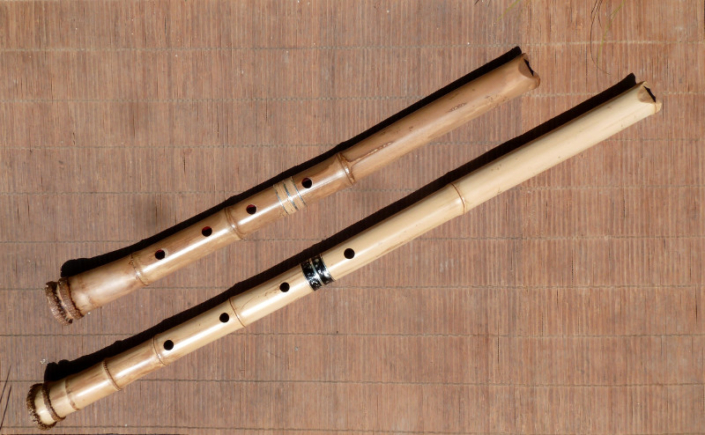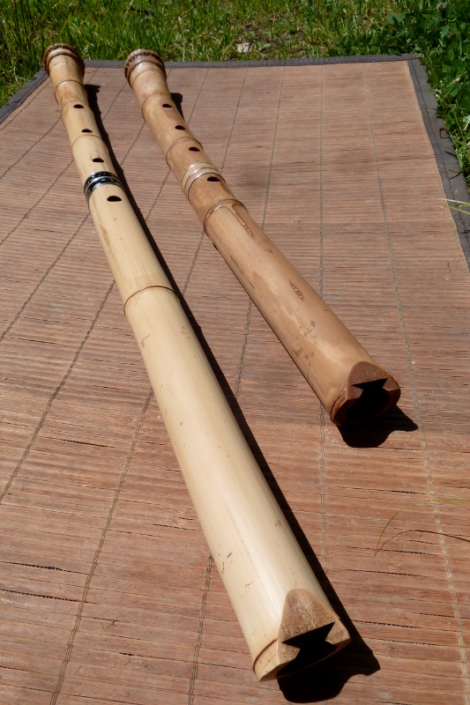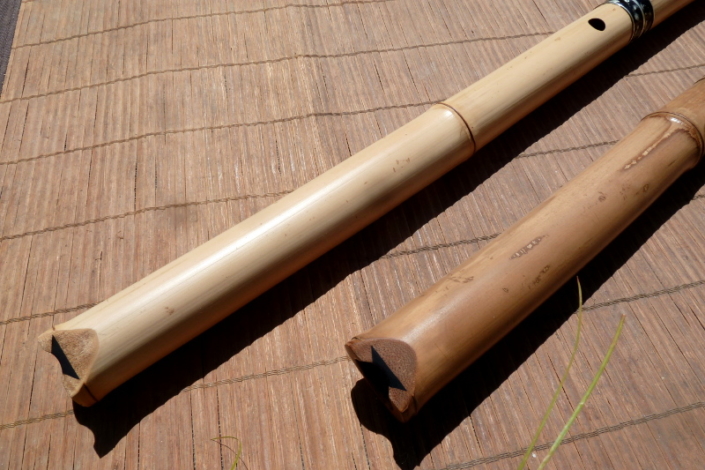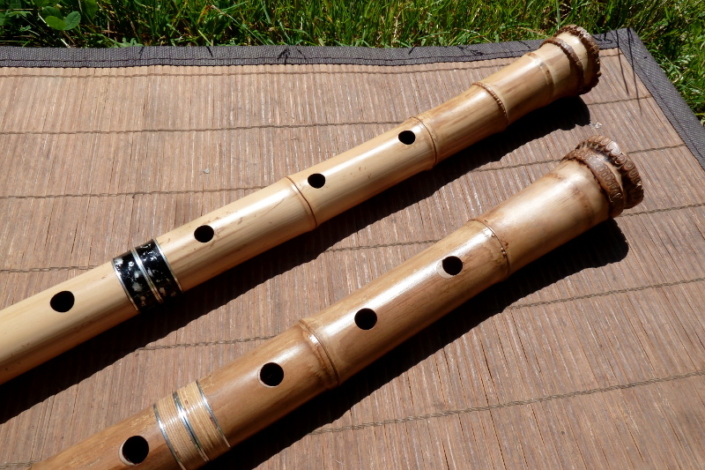I recently acquired two beautiful shakuhachi to restore both made in Kyoto’s SEIKADO workshop.
Here are some informations on the Kitahara family, shakuhachi makers for 4 generations !
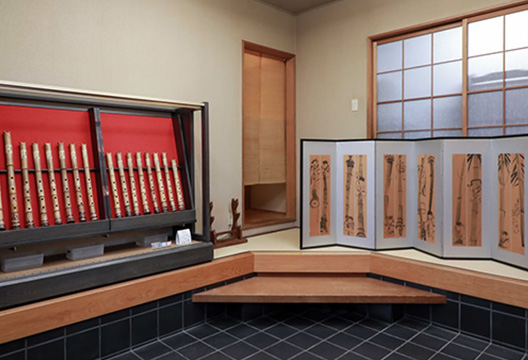 SIKADO workshop is located in Kyoto
SIKADO workshop is located in Kyoto
Website
Founded in 1908 By Kozan Kitahara I in Osaka, Seikado workshop has been focused on trying to modernise shakuhachi making as an answer to growing requirements of musicians of that time in order to build up the shakuhachi to an optimal of acoustic qualities; that was the beginning of ji-ari shakuhachi.
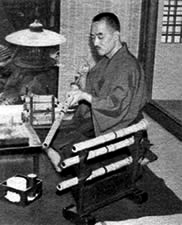
Kozan Kitahara I 初代 北原篁山 (1883-?)
After IIWW, the workshop moved to Kyoto and Kozo Kitahara, the second generation had to recreate a number of specific tools lost during the war.
Kozan Kitahara II, an other son born in 1925 became an accomplished player in Tokyo where he founded in 1957 Yonin no Kai ensemble and recorded several albums.
Today, the 3rd and 4rth generation are working together in Kyoto’s workshop producing shakuhachi for many professional players world-widely.
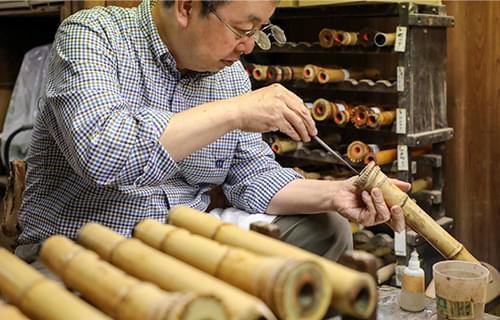
The first of those two flutes I restored is now ready to find its new owner; the second one (older) will come soon…
Thomas
I have work since the beginning of Springtime on 4 different shakuhachi :
1.8 ji-ari – 2.1 ji-nashi – 2.2 Myoan style Ji-nashi – 3.0 Hochiku ji-nashi
I built each of this shakuhachi with a specific state of mind, searching for sounds based on very different criteria.
I feel satisfied with being more and more able to aim to one type of sound, and then select the good piece of bamboo and work it specifically to approach what I’m searching.
— « How long does it takes you to build a flute ? »
— « Several hours and over fifteen years ! »
Thomas
Since September, several nice instruments have been sold without any publication on the website…
I wanted to present some of them here !
1.8 Ji-nashi 1.8 for a Myoan player
A customer from the last year has fallen in love with the Myoan style which he’s learning with a French teacher based in Kyoto : Sébastien Shogetsu.
I made for him an excellent ji-nashi, with a very fine and flexible playability, from a piece of black French bamboo with a lacquered root in the style of antique flutes.
I’d be honoured that this instrument might be presented to the Myoan group in Kyoto probably next year !
1.8 ji-ari 1.8 from French bamboo
The last 1.8 Ji-ari I built from the bore design of the previously restored Tamai Chikusen.
A great shakuhachi, rich in tone and well balanced now played by a new commer i our French Chikumeisha group.
2.0 Ji-ari 2.0 from a piece of Madake brought from Kyushu
This nice Ji-ari with sobre aesthetic has a delightful dark and mysterious tone as the old kinko flutes I love.
Made from a piece of Madake offered by the woman I met by the bamboo grove where I was harvesting (see this article for the story).
This flute is now in Gunnar’s hand and I’m waiting for his approval…!
Here are some news on the way I’m working since September resumption of work.
This year, we are back with my wife on the renovation work of our future home; therefore, I have less time to be in my workshop (frustrating…!)
As I have some customers waiting for new instruments, the last ji-nashi made in September were already sold before I could even upload them on the website…
I’m also working (since springtime) on several ji-ari shakuhachi very time-demanding and I want to keep priority on those rather than on student models that I’m being always asked for.
(I decided to stop the making of the student shakuhachi for next year).
In order to keep a certain amount of shakuhachi available on my website, I decided to restore more vintage flutes to save some time for my own making. I try to select those shakuhachi in order to keep a wider variety of prices.
Soon I will be able to start making shakuhachi from the Madake bamboo harvested in Japan last year…
Thanks for following and supporting my work.
Thomas
I recently had the chance to acquire a ji-ari shakuhachi from a renown maker Tamai Chikusen.
This maker on whom I have very few informations is very famous for being the master of most of the great nowadays makers (Takeharu, Kinya Sogawa, Yamaguchi Shugetsu, Tom Deaver…)
This ji-ari presented a bad large split on all the upper part and several cracks on the lower part.
Thus, with honour and respect, I carefully repaired this beautiful instrument with elegant rattan bindings and I’m glad to be able to repair such severe cracks (over 5mm wide !) without any glue in respect to the traditional way.
I was thanked by the flute itself when discovering its great powerfull haunting voice !
For now, I will keep this instrument for myself using it as a model for my own ji-ari.
Here is a good example of how a shakuhachi maker has fun in his lonely workshop !
It’s important sometimes to get some challenge in our duty; that’s what I did when deciding to extend a bamboo promised to become a nice 2.4 ji-ari in A but missing a few centimetres both for tonality and holes placement…
I had guess before that this technique was sometimes used by observing different flutes restored in this way and got the confirmation by showing Takahashi sensei this shakuhachi in progress in his workshop in Tokyo; He immediately guessed what I did by looking at this unusual long rattan binding !
Some makers also use this technique for twisting utaguchi back in line with tone-holes.
I had no idea if I was able to do it…so I did !
Here is the process resumed in some pictures :
The technique is quite similar to the making of nakatsugi joint; first inserting a bamboo hoso in the two cut parts and then adding another bamboo upon it of a diameter similar to the flute. Then some ji and sanding to adjust precisely the groove for the rattan finishing.
This nice ji-ari is still on the working bench, hopefully available soon !
Here are some pictures detailing steps
to replace a kinko utaguchi inlay on a shakuhachi restored this month :
An other repair on a Myoan inlay made from deer antler :
I am back at the workshop with a lot to do. As may have notice, most of available shakuhachi were sold during summertime….that’s good !
I now need to make new shakuhachi (meditation, student, ji-nashi…) and have a nice ji-ari started in spring that Ihope to finish soon.
I also have few old shakuhachi to repair; some of them may be available next week…
Here are some pictures of thos vintage shakuhachi I’m working on :
For the last two years, I’ve been studying the making of ji-ari thanks to all the restoration work on fine flutes I was entrusted with. My goal until now was to be able to produce good ji-ari shakuhachi with non-madake French bamboos.
Here are then the last two ji-ari that I made which I feel satisfied with the result and want to go on improving.

